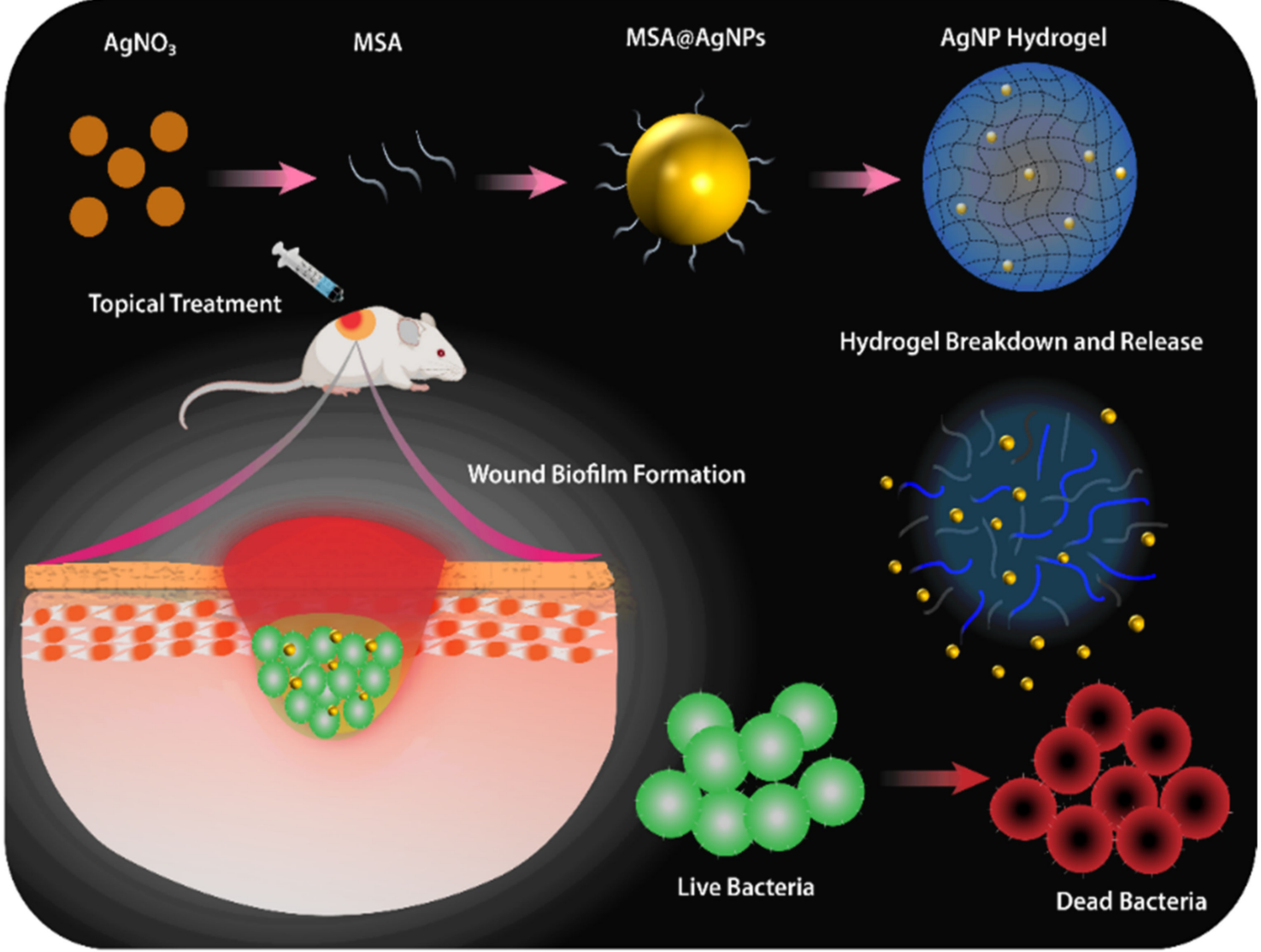Any wound that isn’t treated in the appropriate manner can create a whole host of problems. However, when a chronic wound becomes infected, it presents many adverse complications, including impaired healing, increased exposure to pathogens, and the potential of serious infection, such as sepsis.
 Image Credit: Haidari, H., et. al., (2021) Eradication of Mature Bacterial Biofilms with Concurrent Improvement in Chronic Wound Healing Using Silver Nanoparticle Hydrogel Treatment. Biomedicines, [online] 9(9), p.1182. Available at: https://doi.org/10.3390/biomedicines9091182
Image Credit: Haidari, H., et. al., (2021) Eradication of Mature Bacterial Biofilms with Concurrent Improvement in Chronic Wound Healing Using Silver Nanoparticle Hydrogel Treatment. Biomedicines, [online] 9(9), p.1182. Available at: https://doi.org/10.3390/biomedicines9091182
Now, a team of Australian researchers at the University of South Wales have developed a novel silver nanoparticle hydrogel-coated dressing that could find application as a safe and effective wound treatment that is capable of eliminating infection and offering a good strategy for the treatment of infected wounds.
Chronic wounds were the particular focus of the study as they offer a fertile environment for the growth of mature biofilms, which protect bacteria from both host defense proteins and antibiotics. This can lead to certain bacterial strains developing multi-antibiotic resistance, which can then cause other chronic infections that are difficult to treat.
Advanced AgNP Nanoparticle Dressing
The team, led by Dr. Zlatko Kopecki, Professor Allison J. Cowin and Professor Krasimir Vasilev, hopes to deliver an ‘on demand’ release of ultra-small silver nanoparticles that can destroy antibiotic-resistant bacteria and safely promote wound repair.
For the purpose of their study, the team demonstrated that the silver nanoparticle advanced dressing was able to successfully treat and eliminate Staphylococcus aureus (S. aureus) bacteria – a bacteria identified as a leading cause of wound infection.
Silver nanoparticles (AgNPs) that have antibiofilm activity, including multimodal efficacy in biofilm pore-forming mechanism and broad-spectrum activity, are regarded as a promising approach to tackle mature biofilm wound infections.
Dr. Zlatko Kopecki, The University of South Australia
However, previously the use of AgNPs in the treatment of wound infections has received limited attention due to the toxicity that occurs when AgNP suspensions exhibit high silver ion factions and thus impede healing via a contribution to microbial resistance development.
This makes their use in clinical and therapeutic applications somewhat controversial. However, the researchers tested various formulations of AgNPs that were developed to improve performance, emphasizing stability and antibacterial effects.
To enhance the antibacterial effect, AgNP hydrogels are often combined with antibiotics to endow greater bactericidal activity; however, the use of antibiotic-free systems is preferred to avoid resistance development.
Dr. Zlatko Kopecki, The University of South Australia
Therefore, the team developed a deep understanding of the design and stability requirements of AgNPs, which they declared was critical for safety, efficacy and clinical translation. By introducing multifunctional materials into the hydrogel design, the team was able to promote properties that exhibited good potential for the successful clinical regeneration of infected wounds.
Delivery System Innovation
The successful innovation of their treatment method is thanks to the delivery system that responds to fluctuations in temperature and pH levels, only becoming effective when an infection is detected.
Since the gel dressing only releases the AgNPs when an infection is present, the method could be a safe way to not only treat and heal wounds but serve as a protective dressing that becomes active if infection reappears.
Importantly, this multifunctional hydrogel delivery system not only controls S. aureus infection but also accelerates the healing of infected wounds.
Dr. Zlatko Kopecki, The University of South Australia
This is encouraging news as it could pave the way for a new, promising therapeutic approach in clinical wound care and treatment where biofilm-associated infections impeded the effective healing of chronic wounds.
Such an advance to market could facilitate better patient treatment and care for those suffering wounds caused by burns, heavy skin trauma and some skin disorders that tend to develop chronic, non-healing wounds that are prone to serious infection.
References and Further Reading
Haidari, H., et. al., (2021) Eradication of Mature Bacterial Biofilms with Concurrent Improvement in Chronic Wound Healing Using Silver Nanoparticle Hydrogel Treatment. Biomedicines, [online] 9(9), p.1182. Available at: https://doi.org/10.3390/biomedicines9091182
Disclaimer: The views expressed here are those of the author expressed in their private capacity and do not necessarily represent the views of AZoM.com Limited T/A AZoNetwork the owner and operator of this website. This disclaimer forms part of the Terms and conditions of use of this website.